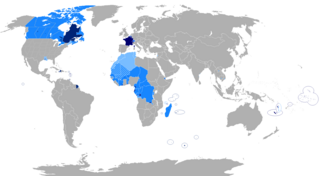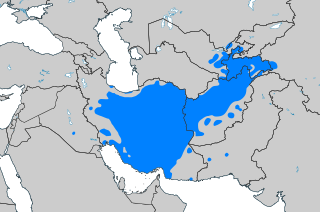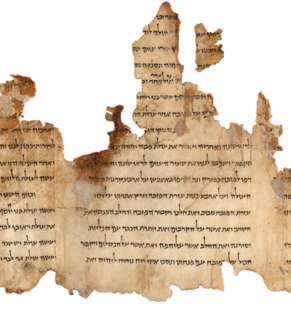Related Research Articles

Arabic is a Semitic language that first emerged in the 1st to 4th centuries CE. It is now the lingua franca of the Arab world. It is named after the Arabs, a term initially used to describe peoples living in the Arabian Peninsula bounded by eastern Egypt in the west, Mesopotamia in the east, and the Anti-Lebanon mountains and Northern Syria in the north, as perceived by ancient Greek geographers The ISO assigns language codes to thirty varieties of Arabic, including its standard form, Modern Standard Arabic, also referred to as Literary Arabic, which is modernized Classical Arabic. This distinction exists primarily among Western linguists; Arabic speakers themselves generally do not distinguish between Modern Standard Arabic and Classical Arabic, but rather refer to both as al-ʿarabiyyatu l-fuṣḥā or simply al-fuṣḥā (اَلْفُصْحَىٰ). Modern Standard Arabic is an official language of 26 states and 1 disputed territory, the third most after English and French.

French is a Romance language of the Indo-European family. It descended from the Vulgar Latin of the Roman Empire, as did all Romance languages. French evolved from Gallo-Romance, the Latin spoken in Gaul, and more specifically in Northern Gaul. Its closest relatives are the other langues d'oïl—languages historically spoken in northern France and in southern Belgium, which French (Francien) largely supplanted. French was also influenced by native Celtic languages of Northern Roman Gaul like Gallia Belgica and by the (Germanic) Frankish language of the post-Roman Frankish invaders. Today, owing to France's past overseas expansion, there are numerous French-based creole languages, most notably Haitian Creole. A French-speaking person or nation may be referred to as Francophone in both English and French.

Persian, also known by its endonym Farsi, is a Western Iranian language belonging to the Iranian branch of the Indo-Iranian subdivision of the Indo-European languages. Persian is a pluricentric language predominantly spoken and used officially within Iran, Afghanistan and Tajikistan in three mutually intelligible standard varieties, namely Iranian Persian, Dari Persian and Tajiki Persian. It is also spoken natively in the Tajik variety by a significant population within Uzbekistan, as well as within other regions with a Persianate history in the cultural sphere of Greater Iran. It is written officially within Iran and Afghanistan in the Persian alphabet, a derivation of the Arabic script, and within Tajikistan in the Tajik alphabet, a derivation of Cyrillic.

Greek is an independent branch of the Indo-European family of languages, native to Greece, Cyprus, Albania, other parts of the Eastern Mediterranean and the Black Sea. It has the longest documented history of any living Indo-European language, spanning at least 3,400 years of written records. Its writing system is the Greek alphabet, which has been used for over 2,600 years; previously, Greek was recorded in writing systems such as Linear B and the Cypriot syllabary. The alphabet arose from the Phoenician script and was in turn the basis of the Latin, Cyrillic, Armenian, Coptic, Gothic, and many other writing systems.

Hebrew is a Northwest Semitic language of the Afroasiatic language family. Historically, it is regarded as the language of the Israelites, Judeans and their ancestors. It is the only Canaanite language still spoken and the only truly successful example of a revived dead language, and one of only two Northwest Semitic languages still spoken, the other being Aramaic.

A language is a structured system of communication used by humans, including speech, gestures and writing. The most widely-spoken languages have writing systems of glyphs that enable sounds or gestures to be inscribed for later reactivation.

Latin is a classical language belonging to the Italic branch of the Indo-European languages. Latin was originally spoken in the area around Rome, known as Latium. Through the power of the Roman Republic, it became the dominant language in Italy, and subsequently throughout the western Roman Empire, before eventually becoming a dead language. Latin has contributed many words to the English language. In particular, Latin roots are used in English descriptions of theology, the sciences, medicine, and law.

A language family is a group of languages related through descent from a common ancestral language or parental language, called the proto-language of that family. The term "family" reflects the tree model of language origination in historical linguistics, which makes use of a metaphor comparing languages to people in a biological family tree, or in a subsequent modification, to species in a phylogenetic tree of evolutionary taxonomy. Linguists therefore describe the daughter languages within a language family as being genetically related.

Tamil is a Dravidian language natively spoken by the Tamil people of South Asia. Tamil is the official language of the Indian state of Tamil Nadu, and an official language of the two sovereign nations, Singapore and Sri Lanka. In India, it is also the official language of the Union Territory of Puducherry. Tamil is spoken by significant minorities in the four other South Indian states of Kerala, Karnataka, Andhra Pradesh and Telangana and the Union Territory of the Andaman and Nicobar Islands. It is also spoken by the Tamil diaspora found in many countries, including Malaysia, South Africa, United Kingdom, United States, Canada, Australia and Mauritius. Tamil is also natively spoken by Sri Lankan Moors.

Yiddish is a High German–derived language historically spoken by Ashkenazi Jews. It originated during the 9th century in Central Europe, providing the nascent Ashkenazi community with a High German-based vernacular fused with many elements taken from Hebrew and to some extent Aramaic; most varieties also have substantial influence from Slavic languages, and the vocabulary contains traces of influence from Romance languages. Yiddish writing uses the Hebrew alphabet. In the 1990s, there were around 1.5–2 million speakers of Yiddish, mostly Hasidic and Haredi Jews. In 2012, the Center for Applied Linguistics estimated the number of speakers to have had a worldwide peak at 11 million, with the number of speakers in the United States and Canada then totaling 150,000. An estimate from Rutgers University gives 250,000 American speakers, 250,000 Israeli speakers, and 100,000 in the rest of the world.

The English Wikipedia is the English-language edition of the free online encyclopedia, Wikipedia. It was founded on 15 January 2001 as Wikipedia's first edition and, as of April 2021, has the most articles of any edition, at 6,308,068. As of May 2021, 11% of articles in all Wikipedias belong to the English-language edition. This share has gradually declined from more than 50 percent in 2003, due to the growth of Wikipedias in other languages. The edition's one-billionth edit was made on 13 January 2021. The English Wikipedia has received praise for its enablement of democratization of knowledge and extent of coverage. It is the largest encyclopedia ever assembled.
The Ngero–Vitiaz languages form a linkage of Austronesian languages in northern Papua New Guinea. They are spoken, from west to east, in Madang Province, Morobe Province, and New Britain.

Google Translate is a multilingual neural machine translation service developed by Google, to translate text, documents and websites from one language into another. It offers a website interface, a mobile app for Android and iOS, and an application programming interface that helps developers build browser extensions and software applications. As of May 2021, Google Translate supports 109 languages at various levels and as of April 2016, claimed over 500 million total users, with more than 100 billion words translated daily.
Futuna-Aniwa is a language spoken in the Tafea Province of Vanuatu on the outlier islands of Futuna and Aniwa. The language has approximately 1,500 speakers. It is a Polynesian language, part of the Austronesian language family.

English is a West Germanic language first spoken in early medieval England, which has become the leading language of international discourse in the 21st century. It is named after the Angles, one of the ancient Germanic peoples that migrated to the area of Great Britain that later took their name, England. Both names derive from Anglia, a peninsula on the Baltic Sea. English is most closely related to Frisian and Low Saxon, while its vocabulary has been significantly influenced by other Germanic languages, particularly Old Norse, as well as Latin and French.

Hiidentorni / Perimä Vihassa Ja Verikostossa is a compilation by the black metal band Horna. It was released on Woodcut Records in 2000.
Linguistics is the scientific study of language. It encompasses the analysis of every aspect of language, as well as the methods for studying and modeling them.

Ricky Rapper and the Bicycle Thief is a 2009 Finnish musical film. The film is based on children's fantasy book series Ricky Rapper of Sinikka Nopola and Tiina Nopola. However, the film is not based on any book volume. The children's musical comedy Ricky Rapper and the Bicycle Thief continues loosely the previous film Ricky Rapper. The film was shot in Kartanonkoski in the city of Vantaa and also in Hyvinkää, Porvoo and Sipoo in the summer 2009. Furthermore, train station scenes were shot in the Kauklahti railway station in the city of Espoo and on the Ilmala rail yard in the city of Helsinki.
The Samoa women's national rugby league team, also known as the Fetū Samoa, represents Samoa in Women's rugby league. They are administered by the Rugby League Samoa.
Eniram Oy, founded in 2005, is a Finnish clean-tech software engineering company which specializes in marine energy management products and services for ship-owners and operators of commercial vessels, ranging from cruise ships, bulk carriers, container ships, LNG carriers and tankers.
References
- ↑ Avau at Ethnologue (18th ed., 2015)